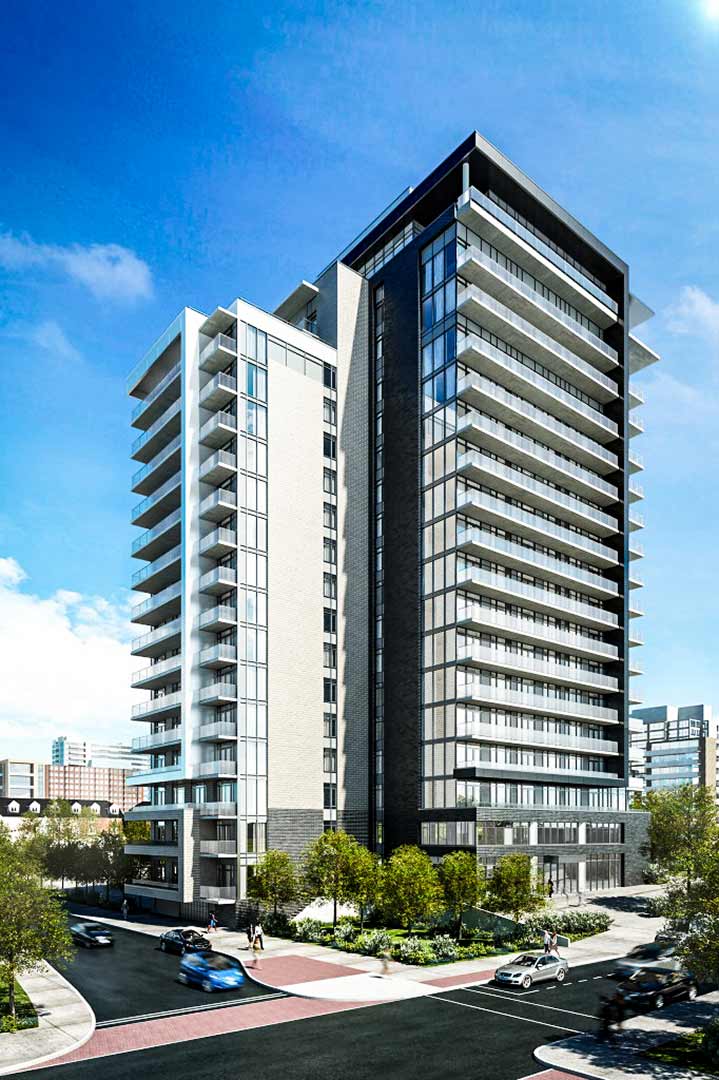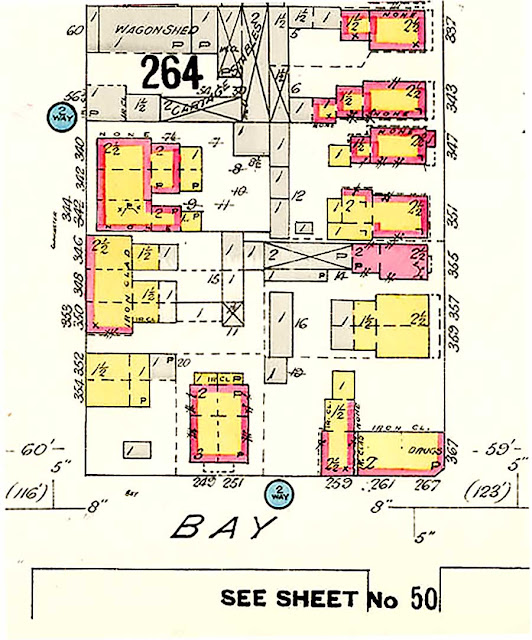I know, I know — it looks lopsided as hell. That's what I get for trying to center a symmetric building that has an asymmetric element tacked on to one side, as they both sit on a gentle slope rising toward Nanny Goat Hill. Live and learn...
There are still a few of the original brick houses on this stretch of Somerset, so this building sticks out nicely. Institutional from the get-go, #480 demonstrates how a coat of paint and some colour-coordinated trim can make a cinder-block box look like a converted Kingdom Hall. Sadly (or not) the low-relief door and window treatments recede under that wash of ecru.
So, if not a house, what then? An office now, obviously — that Co-operators sign looks like it came with the place though we know it didn't. Surrounded by narrow, single-family houses, 480's flat roof and basement-stairway enclosure show up clearly on geoOttawa's 1958 aerial photo. The width of the lot makes me wonder if 480 replaced two old houses, but Goad 1912 (sheet 55 block 373) shows a "contractor's yard" with wooden sheds and empty space between houses 474 and 490.
Ottawa's Golden Age of Cinder-Block was a post-WWII phenomenon, so that gives us a 13 year window of likely construction, from war's end in '45 to the aerial photo-op of '58 — Can we hone that date? Time to hit the newspapers...
...and we hit pay dirt with an Ottawa Journal article from the summer of 1948.
Later mentions cite the "No. 2 Health Centre" as one of four built around the same time, in response to the post-war baby boom.
A January 1954 Journal spread (and a great excuse for half a page spread of cute baby photos) describes an afternoon's DPT vaccination clinic at #480 while a piece from '58 mentions a "Salk vaccine" (polio jab) clinic. When it opened, #2 Health Centre was in the vanguard of community walk-ins designed to ease the burden on emergency rooms — by the 1970s it was focused (with a certain irony) on family planning, viz a bizarre October 6 1971 article opening with this jaw-dropper, emphasis mine...
"Parents protesting a lack of day-care facilities in Centre Town Tuesday were told "this is a family planning clinic — if you'd come here before, you wouldn't have this problem."[ouch!]
The problem was 11 infants and children and their parents who camped in the basement of the Ottawa-Carleton Regional Health Unit office at 480 Somerset Street West Tuesday for 10 hours.
The protesters, members of the year-old Bronson area day-care co-operative said that they would remain in the basement until either their demands [adequate daycare in a permanent location] were met or they were removed bodily..." — Sandra Woods, Ottawa JournalAnd that, ladies and gentlemen, is where our heads were at in the '70s. The Journal indicates that #480 continued as a clinic until at least 1979 (the daily ceased publication in 1980), after which date I sort of loose interest — although the row houses to the west are worth looking at. I remember Octopus Books and later(?) Thuna health food store, which moved and morphed into Herb & Spice. I retain a mental picture of a young Jeff Sugarman standing shirtless in the doorway, telling two (female) Jehovah's Witnesses (regarding religion) that "my body is my temple". Okay, you had to be there ;-)














